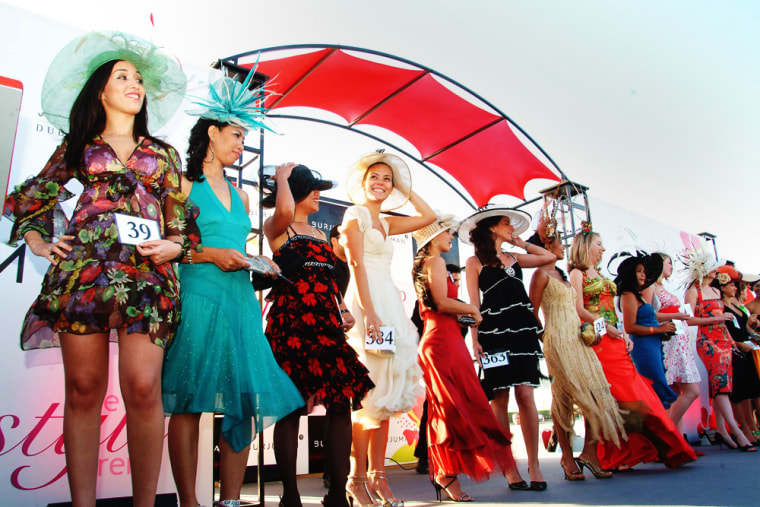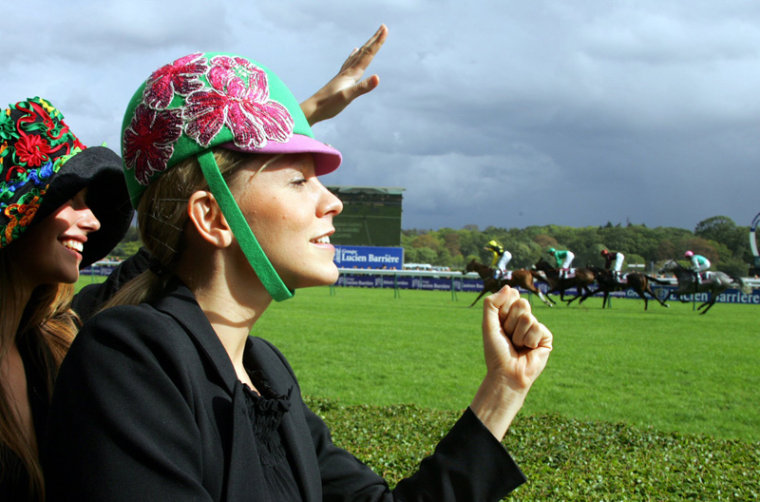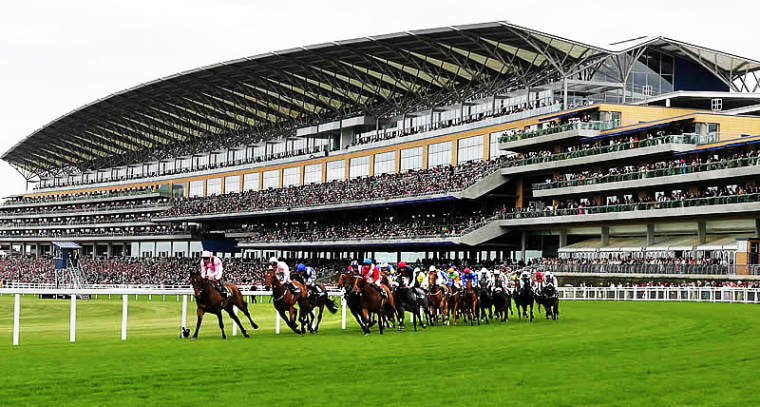Rock stars are sipping cocktails in the stands, supermodels are getting their hair done in the Style Arena, and billionaire oil sheiks and Hollywood movie moguls are discussing last night’s lavish Bedouin soiree. Meanwhile, out on the track, the word’s fastest horses are heading to the stalls, with Dubai's hotels glimmering in the distance.
The Dubai World Cup is not only the richest horse race in the world. It is one of the most spectacular parties on Earth: a week-long, diamond-studded, jet-set affair that attracts the rich and famous from across the globe to the Arabian Gulf state. As such it is also a symbol of what horse racing has become in the 21st century. From Melbourne to Hong Kong, Dubai to Kentucky, the world’s great horse races are now just as much about the parties, the fashion, the food and the celebrities, as they are about the races themselves.
“The sport is unrecognizable from ten years ago,” said Nick Smith, head of public relations for Britain’s famous Ascot racecourse as he sipped champagne on a balcony of Dubai’s Mina a Salaam hotel, two days before this year’s Dubai World Cup.
“Racing has long been glamorous, but it was always a local thing. Now it’s gone global. With so much prize money around, meetings in Dubai, Hong Kong, Melbourne, and the U.S. now attract the best horses, jockeys and trainers in the world, and with that comes a whole carnival of spectacular side events that keep drawing in more and more fans.”
The Dubai World Cup helped begin the transformation. Started in 1996 by Sheikh Mohammed, the ruler of the Emirate state and co-founder of the great Godolphin racing stable, it comprises six races on the day itself, with the main 2000m turf event for four-year-olds being worth a whopping $6 million. But the action in the days leading up to the event is just as exciting.
Paying guests can attend a celebrity-studded ‘Breakfast with the Stars,’ where they brunch in a private paddock at the track as the horses parade past; and at the aforementioned party in the desert, hosted by the Sheikh himself, 5,000 invited guests are bussed out to Bedouin tents in the dunes for gourmet food, camel racing and fireworks. As for the Nad Al Sheba track, it’s a mini city in itself, with several fashion boutiques, restaurants, salons, bars, and a state-of-the-art flood-lit 18-hole golf course.
The Dubai World Cup is the first race that the who’s who of international racing mark on their calendar, but now it seems that even the world’s famous established races in Europe, the U.S. and elsewhere are following Dubai’s glitzy carnival-like lead.
Britain’s Royal Ascot, a five-day mid-summer racing festival, remains the sport’s most historic pageant, but where it was once the preserve of high society—the Royal Family arrive each day in horse drawn carriages—the Ascot now has a hospitality division catering to outsiders who want to join in the fun. One package for this year’s event includes two nights in the luxurious Cliveden House hotel, from where you’re flown by helicopter to the track, ushered to your private table in the Parade Ring restaurant adjacent to the Royal Box, and allowed access to the exclusive Royal Enclosure. All for just £3,527 per person.

Across London at Epsom Downs, home to Britain’s greatest horse race the Epsom Derby, big spenders can book tickets to the garden party on the exclusive Prince’s Lawn Pavilion, where they get to sip Laurent Perrier Rose and slurp oysters within a few feet of the finish line and the monarch herself, who sits in the adjacent Queen’s Stand.
In the U.S., , the first leg of the Triple Crown, has always been the flagship of American racing, but every year it gets bigger, the city of Louisville turning into a virtual New Orleans-at-Mardi Gras the day before the big race.
“Five years ago I was sending 100 clients to the Derby,” says Brian Wilder, founder of Premiere Sports Travel, one of the U.S.’s leading sports travel companies. “Now I take more than 700 clients—it’s right up there with the Super Bowl and the World Series.” For the right price, Wilder arranges tickets to Millionaire’s Row or the members-only Turf Club in the stands, where his guests can sip mint juleps next to the likes of Sheikh Mohammed and Pamela Anderson; and he also organizes visits to Kentucky horse farms where famous jockeys and owners are booked to meet and speak to his guests.

That said, even Wilder admits it’s difficult to get access to the biggest bash of all: the Barnstable Brown Gala, a charity event held in a famous old Louisville mansion on the eve of race night that attracts Hollywood stars, country music legends and billionaire race horse owners, as well as hundreds of paparazzi and shrieking fans lining up outside to see them arrive.
Lucrative sponsorship from the world’s leading luxury brands are one major reason for horse racing’s global makeover. Once a minor stop of the racing circuit, Hong Kong now has several major meetings a year, among them the Mercedes-Benz Hong Kong Derby, worth two million dollars, and the , sponsored by the exclusive Swiss watchmaker, worth $2.3 million. As for the once ramshackle Hong Kong Jockey Club track, it’s now been transformed into the futuristic Sha Tin Race Course with the world's first retractable parade ring roof, the world’s longest Diamond Vision Television screen to view the races, and several floor-to-ceiling glass bars and sushi restaurants such as the Skylight Lounge, perched right over the winning post.
For the biggest racing carnival of all, however, you’re going to have to go Down Under. First run in 1861 the , Australia’s answer to the Kentucky Derby, has long been known as the "Race that Stops the Nation." Nowadays it stops a lot more than that, with some 700 million people in 120 countries tuning into the live broadcast. Melbourne Cup Carnival, a four-day party of racing, fashion shows, gambling and street parades has sprung up around it, and the state of Victoria has even declared race day itself a state-wide holiday. Tellingly though, its current success can also be traced back to the desert: It’s sponsored by Emirates, the Dubai airline part-owned by Sheikh Mohammed.
